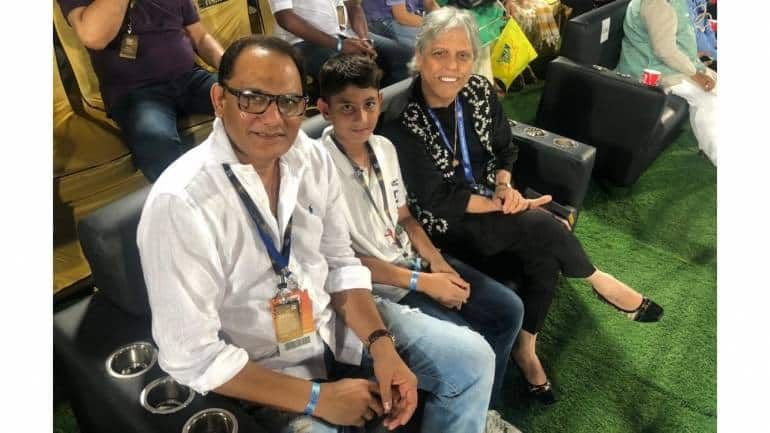



… until the 1960s, women’s cricket in India was restricted largely to the urban privileged. When Mahendra Kumar Sharma, the pioneer of women’s cricket in India, had to traverse the by-lanes of Lucknow in a rickshaw, yelling kanyaon ki cricket hogi, zaroor aaiye through a megaphone.
… when the first Women’s World Cup was played, in 1973, the Women’s Cricket Association of India (WCAI) was not ready to send a team. They sent cricketer-administrator Neeta Telang to watch the final and to seek global
recognition. Telang had to assure the World Cup organisers that Indian Women did not have to play in sarees.
… there was craze for women’s cricket in India, especially in the early days. Australia Under-25 Women toured India in 1973-74, and played their matches to packed houses. A pregnant woman amidst the Eden
Gardens crowd who gave birth in the historic stadium.
Also read: Why WPL teams must look back at the early years of IPL
… the craze did not necessarily amount to cash. When India toured New Zealand in 1976-77, the WCAI had to arrange for the cricketers to live with local Indian families or the New Zealand cricketers. The pocket allowance for every cricketer was a dollar a day.
… since they first fielded a team, in 1985-86, the Indian Railways emerged as the first long-term patrons of women’s cricket in the world. They got cricketers from around the country on their payroll, guaranteeing them financial independence as well as income after their playing days were over. This also enabled them to work until three and practise thereafter, in facilities superior to other teams. Travel was in air-conditioned coaches,
when the other teams only got second-class compartments.
… as the Railways threatened to reduce Indian cricket to become a monopoly, Air India arrived as a rival, in 1992-93. They boasted of facilities just as good, if not better: the travel was, after all, by air. Women’s cricket
in India had its first national derby. The first support for women’s cricket, thus, came from outside cricket.
… Chandra Nayudu, the first captain of Uttar Pradesh Women, was among the first long-term female cricket commentators in the world. Perhaps in an attempt to emulate All India Radio, Doordarshan got Shantha Rangaswamy as well as Behroze and Diana Edulji on air in the 1990s. Unfortunately, that stint lasted only until Diana found out that the male commentators earned considerably more and stormed out.
 Mohd Azharuddin with Diana Edulji (right). (Image source: Twitter/AzharFlicks)
Mohd Azharuddin with Diana Edulji (right). (Image source: Twitter/AzharFlicks)
… as the BCCI made absurd profits out of televised cricket in the 1990s, the WCAI fell behind. The coverage that used to be there in the 1970s, or even in the 1980s, faded away in the new decade. While the All India Radio faithfully covered some women’s domestic cricket, print coverage was scant, tucked away in a corner of the sports page.
… with little source of income, the cash-strapped WCAI could not arrange for regular international cricket. India Women did not play a Test match between 1976-77 and 1983-84, and one Test series between 1986 and 1994-95. Between 1995-96 and 1999, all they played was the 1997 World Cup on home soil.
… it was a miracle that the 1997 World Cup was played at all, on a budget less than the opening ceremony of the 1996 men’s edition – and even that money was acquired very late. The final was played on a Monday – because Doordarshan wanted it that way: a men’s bilateral ODI between India and Sri Lanka was scheduled on the Sunday. It did not matter: thousands turned up to watch the final in Eden Gardens.
… there was virtually no media coverage of Mithali Raj’s 214, India’s run to the final of the 2005 World Cup, or Jhulan Goswami’s historic ten-wicket haul in Taunton in 2006 in India. Despite the limited coverage, fans
back home did take notice.
… things improved once the BCCI took over women’s cricket in India from the WCAI in 2006. Practice facilities were better, air travel took over, and the cricketers were no longer put up at dormitories. But there was still little money in women’s cricket.
… after a disastrous World Cup in 2013 and a T20 World Cup in 2016, both at home, India roared back in the 2017 World Cup in England. They lost a close final to the hosts, but not before smashing television viewership records. Once the World Cup was over, Raj, captain of the side, insisted on a Women’s IPL. In the same year, the BCCI announced the first ever contracts for the women cricketers. The amounts were a fraction of what their male counterparts earned… but it was a start. The next year, the BCCI launched the Women’s T20 Challenge, a two-team event that expanded to three teams in 2019.
… on the field, India achieved unprecedented success over the next few years, making it to the semi-final of the T20 World Cup in 2018 and 2023 and the final in 2020 (the viewership record was broken again), and the
final of the Commonwealth Games in 2022.
… in 2023, India won the inaugural Under-19 World Cup, in South Africa. The BCCI announced the WPL – and the five teams – during the tournament. The WPL media rights were acquired for unprecedented sums in women’s cricket, just like the amounts spent on cricketers at the auction. As WPL promises to take women’s cricket – not only in India but around the world – to unchartered territories, let us not forget what it used to be like.
Discover the latest Business News, Sensex, and Nifty updates. Obtain Personal Finance insights, tax queries, and expert opinions on Moneycontrol or download the Moneycontrol App to stay updated!
Find the best of Al News in one place, specially curated for you every weekend.
Stay on top of the latest tech trends and biggest startup news.